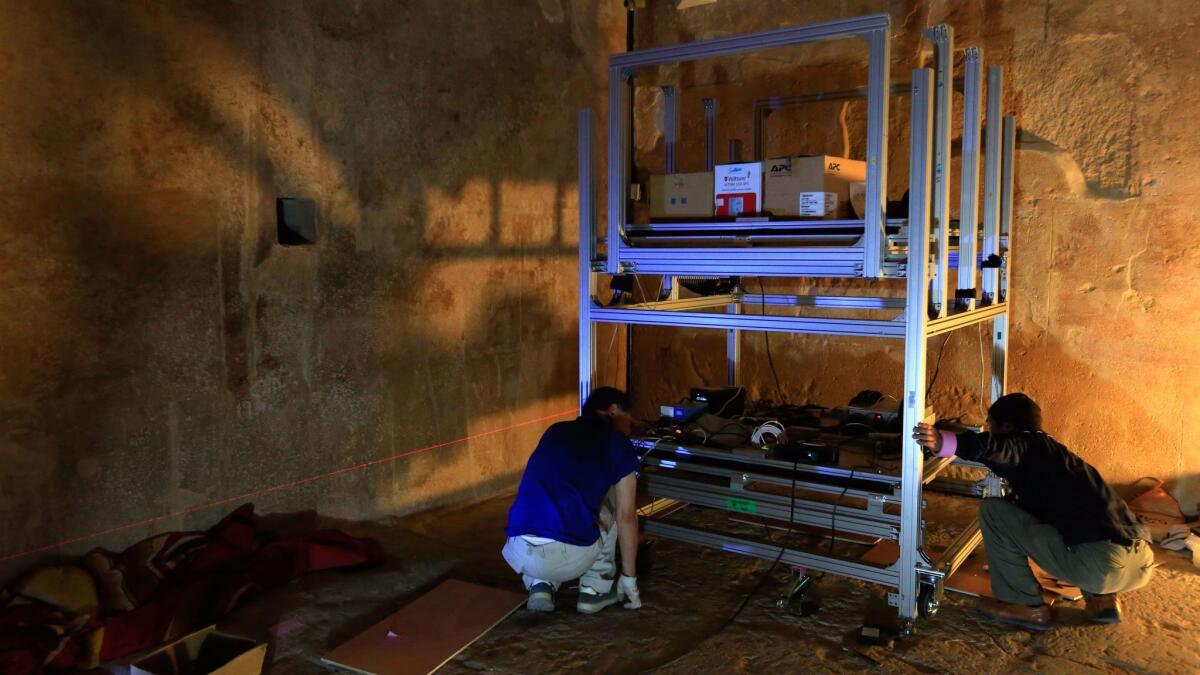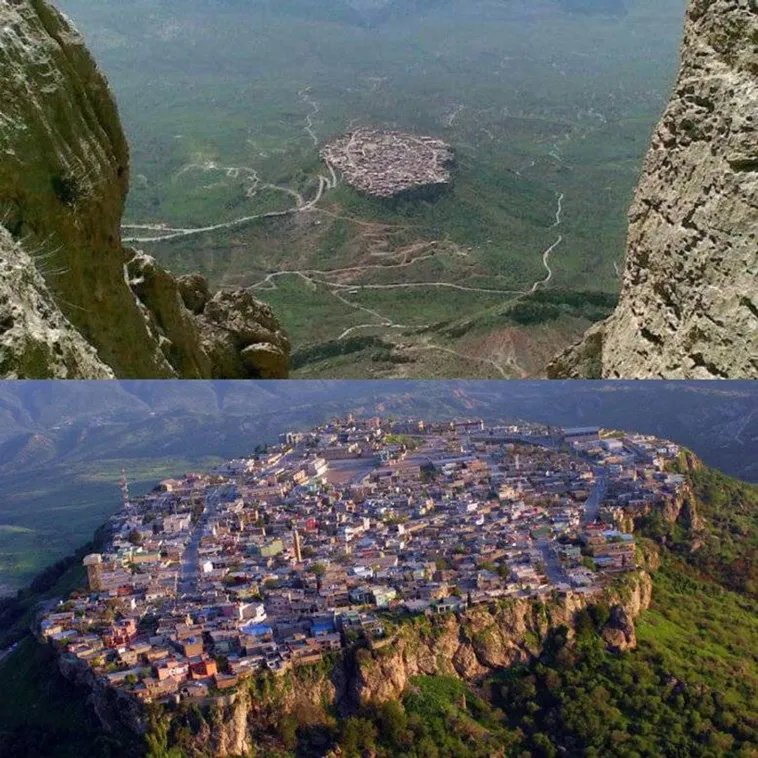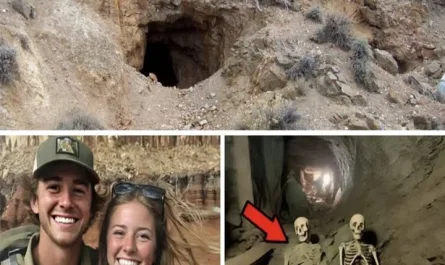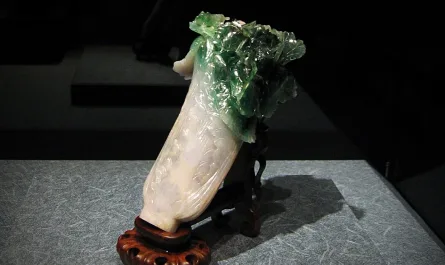Scientists have found a hidden chamber in Egypt’s Great Pyramid of Giza, the first such discovery in the structure since the 19th century and one likely to spark a new surge of interest in the pharaohs. (Nov. 2, 2017)
An international team of scientists has discovered a large hidden cavity within Egypt’s Great Pyramid of Giza, and they did it by looking for muons — particles sent to Earth by cosmic rays from space.
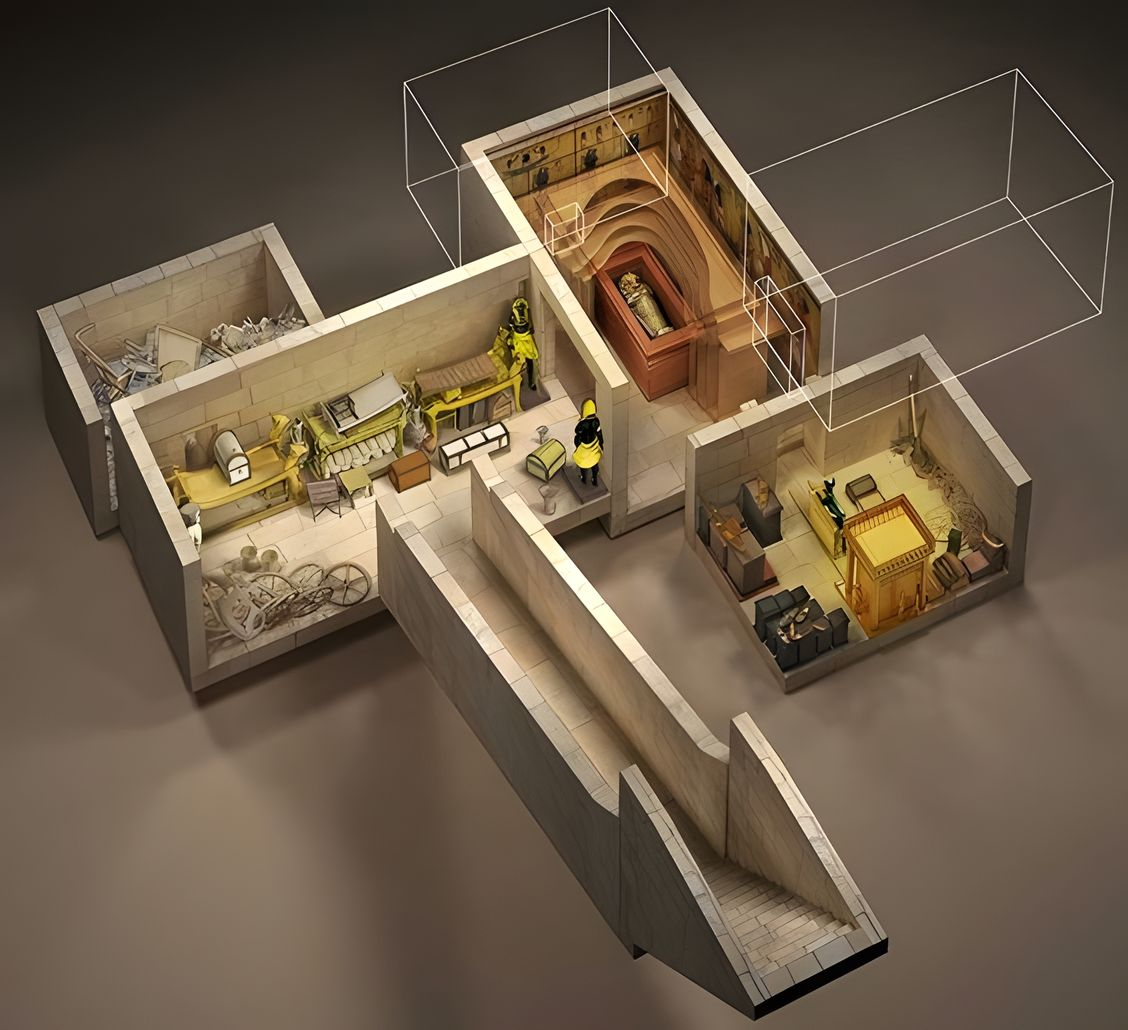
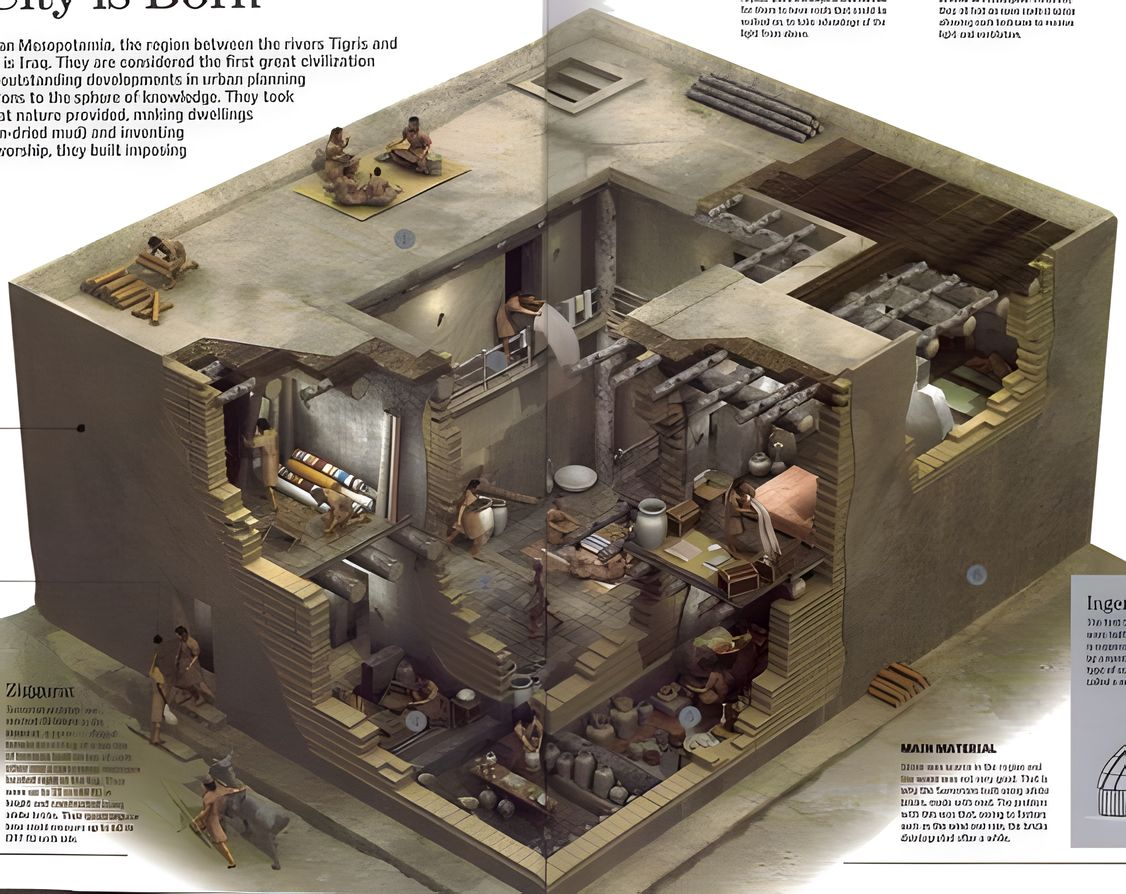
The mysterious cavity, described Thursday in the journal Nature, is at least 30 meters long. And though the researchers aren’t sure whether it’s straight or inclined, whether it’s one large space or a series of smaller ones, the discovery has already triggered interest among archaeologists as to the purpose of the void.

“What we are sure about is that this big void is there,” said Mehdi Tayoubi, president of the nonprofit Heritage Innovation Preservation Institute in Paris, which led the effort. ”But we need to understand [it] better.”
How scientists used particle physics to see inside the Great Pyramid of Giza.
The Great Pyramid of Giza was built during the rule of the Pharaoh Khufu, also known as Cheops, whose reign lasted from 2509 to 2483 BC. The largest of the pyramids, it stands some 139 meters high and 230 meters wide. Tourists enter the pyramid from a tunnel that was dug at the behest of Caliph al-Ma’mun around AD 820.
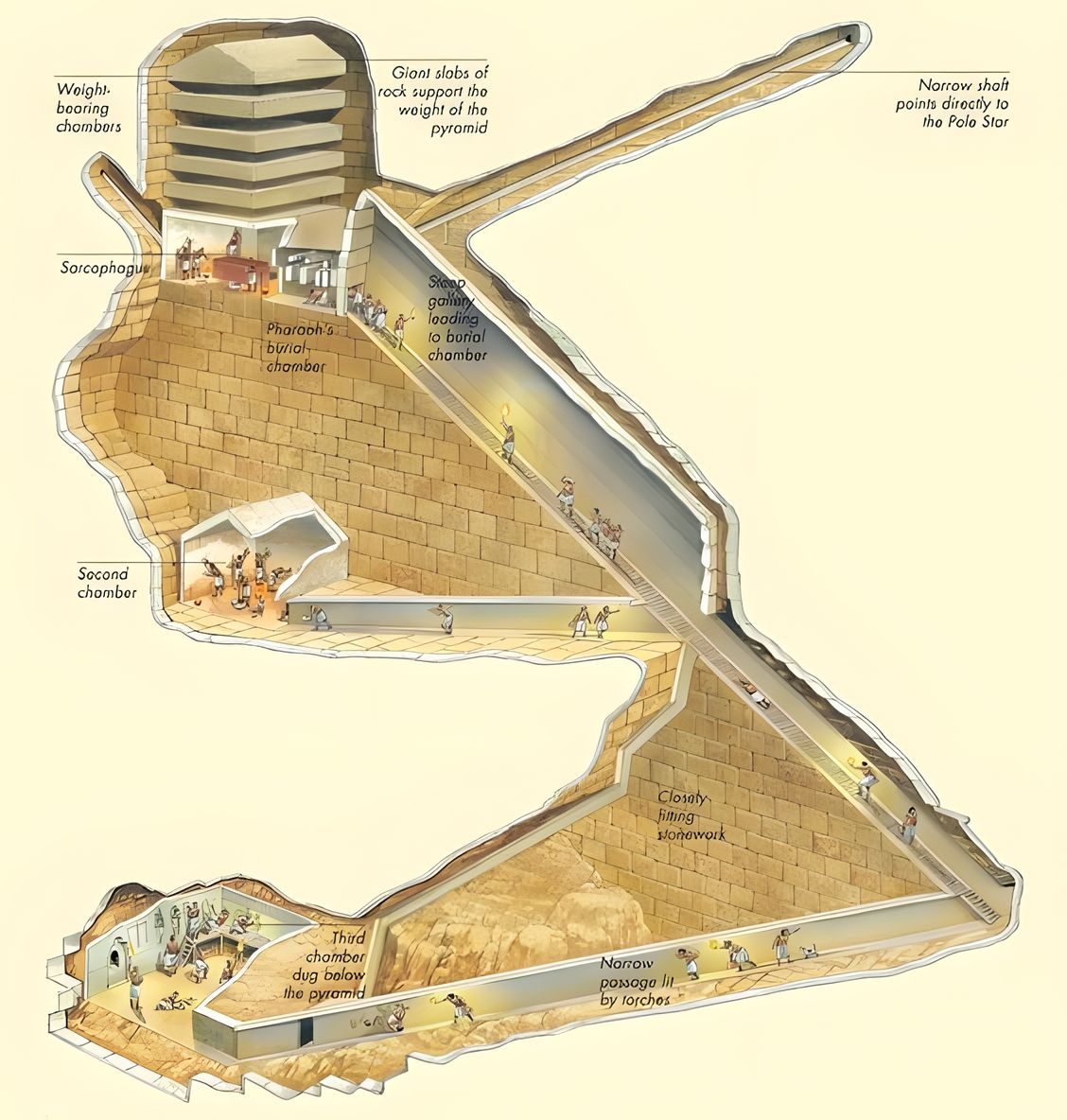
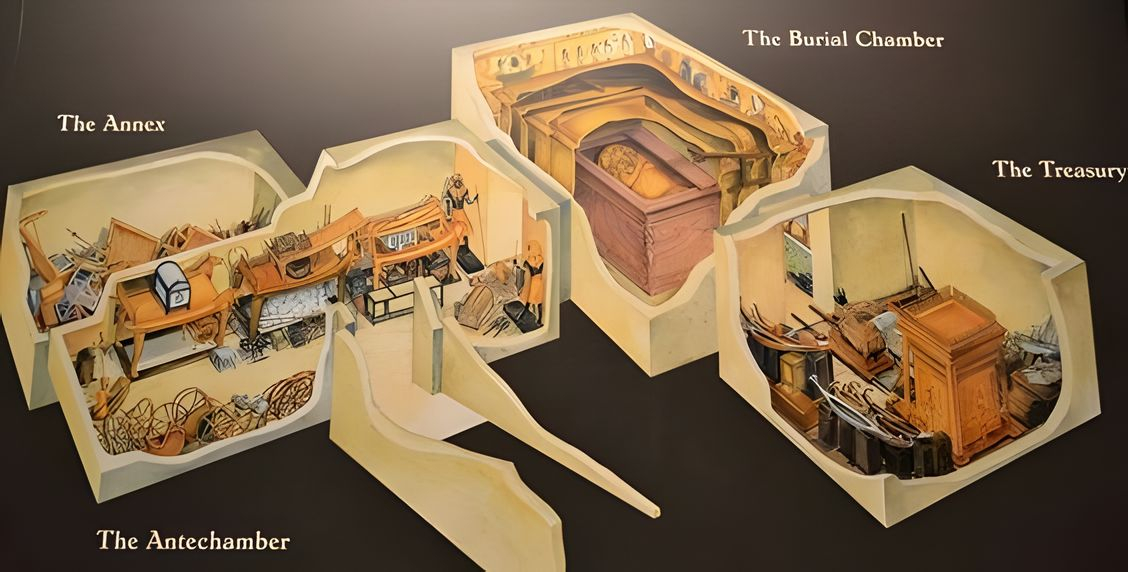
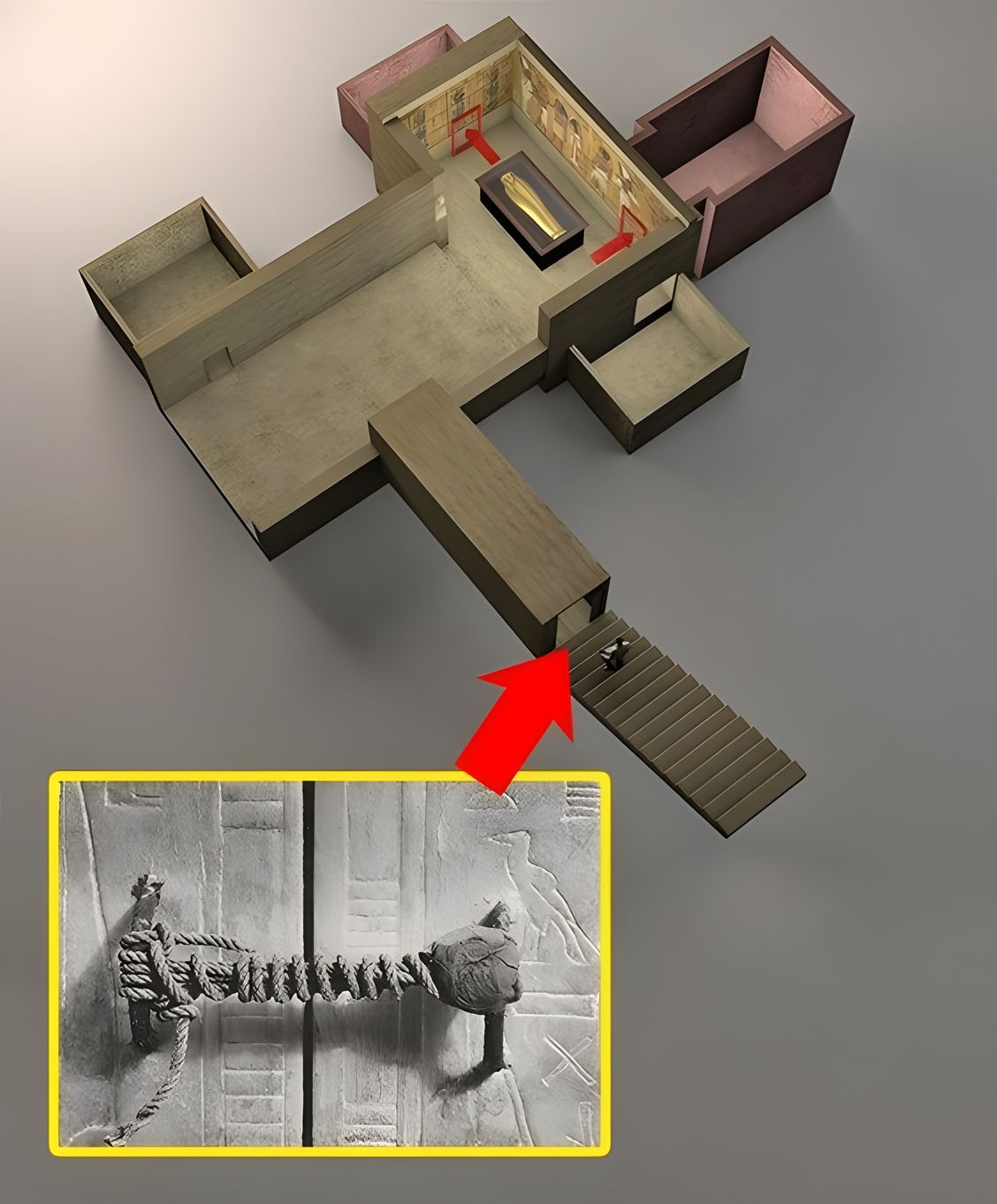
Three known chambers sit within this enormous structure at different heights: an underground chamber, the Queen’s chamber, and finally the King’s chamber. All three are connected by corridors, the largest of which is the Grand Gallery, which measures 8.6 meters high, 46.7 meters long and up to 2.1 meters wide. The King’s and Queen’s chambers each have two “air shafts” that were mapped by robots between 1990 and 2010.
But much of the pyramid’s interior structure has remained a mystery, in part because there are very few documents from Khufu’s time describing the building’s design and construction.
Other research teams have searched for hidden “chambers” by measuring tiny variations in the pyramid’s gravity or by using ground-penetrating radar. The results of those efforts have been inconclusive.

For this project, a team of researchers attempted to boost their odds of success by adding muons to their scientific toolkit.
Muons are subatomic particles that are produced when cosmic rays — high-speed atom fragments that hurtle through space — smash into the atmosphere. They carpet-bomb Earth at a rate of 10,000 per square meter per minute.
These tiny particles can pass through hundreds of meters of rock before decaying or being absorbed. This turns out to be very handy for scientists who want to probe a pyramid somewhat in the way that doctors use X-rays to examine a bone inside your body.
This technique had been pioneered decades ago by Nobel laureate Luis Alvarez of UC Berkeley, who used muon tomography to probe the smaller Khafre pyramid nearby. He concluded that there were no large hidden voids within the structure.
Scientists with the ScanPyramids project who are studying the Great Pyramid had already found hints of what appeared to be a corridor behind the chevrons on the structure’s north face.
